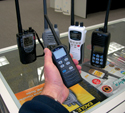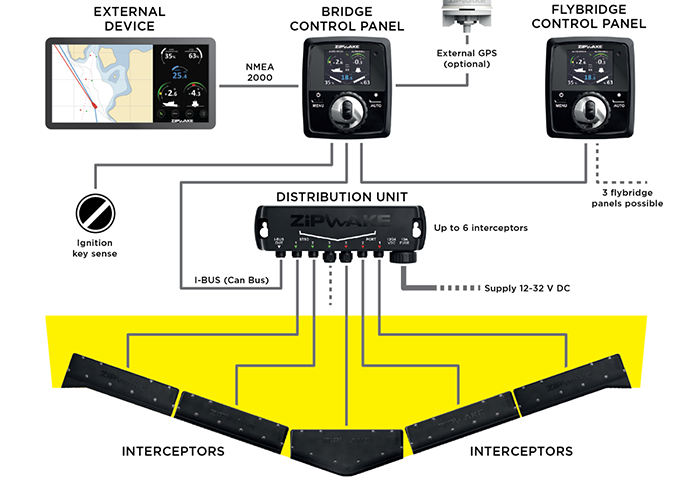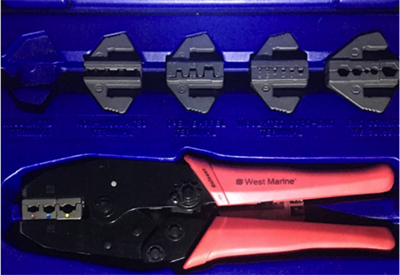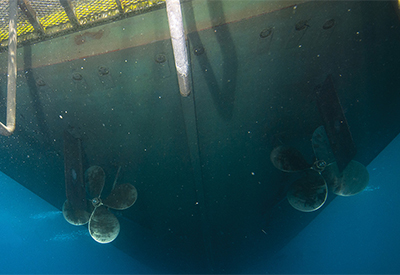Social Calls or a Lifeline – Why You Need a VHF Radio

 Even if you never venture away from your favourite sheltered lake or river, a VHF radio is well worth the $200 investment for a basic radio and the ROC (M) Course and License to operate it. Here’s why.
Even if you never venture away from your favourite sheltered lake or river, a VHF radio is well worth the $200 investment for a basic radio and the ROC (M) Course and License to operate it. Here’s why.
Cell phones (your other logical communication tool) are usually not waterproof, only reach the number you call and may or may not get service out on the water. My cell phone does not work on our lake, a mere 12 km. from the busy Thousand Islands and Lake Ontario, while a VHF radio does.
But a VHF radio does far more than just act like a walkie-talkie to the Coast Guard!
Let’s start with a few basics. VHF radios come in two flavours: battery-powered, handheld units or fixed mount radio. Battery powered handheld units work even on small boats with no power and no battery on board. Larger boats with electric starts and an instrument panel will have a 12-volt battery onboard, so they can go with a regular fixed mount radio.
Other vessels, the Coast Guard, many marinas and local police departments all monitor VHF radio on channel 16. If you call out on 16, generally someone will hear you. It is fast and simple.
You may also receive another signal calling for help or a weather alert (such as a sudden change in wind velocity or an oncoming storm); then there are social calls as well.
You can hail another radio on shore, or on another boat using channel 16. This could be friends or family, other fishermen, or a marina where you can get fuel or repairs. When you connect, you can agree to change to another non-emergency channel to have a conversation.
If someone is injured while tubing, fishing or swimming, a VHF radio can be a lifesaver. And $200 is all it costs for the license and radio. Talk all you want (on the correct channels) at no further cost, every season. Sound like a smart move?
You bet. So, what do you look for in a VHF? Let’s start with the hand held VHF radios. The first issue to consider is how the radio will be used. If it will only be in use on an irregular basis, get one that uses regular replaceable batteries or at least allows a regular battery to be used as a backup. These can be as low as $100 or even less to buy.
The somewhat more costly handheld VHF units with big rechargeable batteries included prefer to be used in a regular charge/discharge way to avoid developing a “memory” or related battery problem. Name brands will offer replacement batteries, but they will cost perhaps $50 or $75.
An alternative is to select a VHF that has a lithium ion battery. These last longer, hold a charge longer and will better tolerate occasional charge/discharge cycles. As a bonus, lithium ion units are generally smaller and sometimes much lighter…but usually they are more expensive.
While it’s true that you get what you pay for, the electronics industry has come so far that there are excellent products from all the name brand manufacturers. Even the low-end units are pretty good and the prices are down across the board making these products much more affordable than they’ve been in the past. The essential controls are virtually all the same from one radio to another.
First, there is a control to switch channels. A nice feature we found on many units was a “16” button. Whatever channel you’re on, you can press the “16” button to go straight back.
A “Squelch” control is on all units and it lets you adjust the “squelch” circuit to silence the “radio noise” in between valuable signals. That way you don’t have to listen to static.
Many handhelds feature a Weather or Weather alert button. The weather button can be used to listen to Environment Canada’s weather broadcasts any time you want. Weather ‘Alerts’ are also broadcast by Environment Canada to let you know something ‘exciting’ may be heading your way. Note, however, that the older, basic weather alert system would send alerts for weather events over a large area, so the alarm could go off even if the weather problem is far away from your location.
The new type called S.A.M.E. (Specific Area Message Encoding) is just that… specific. You have to enter the codes (once) into your radio so it knows what area you’re interested in, then when the alert goes off, pay attention; the message will be about the weather where you are! The area codes (also known as CLC codes) are free for the getting at Environment Canada’s website.
www.msc-smc.ec.gc.ca/msb/weatheradio/transmitter/index_e.cfm
Power Saver controls enable you to reduce the power to save your battery at times when you don’t need maximum range.
DSC stands for Digital Selective Calling and virtually all fixed-mount VHF radios have DSC, however few handheld units offer this feature because they lack the capability to have a global positioning input signal (GPS). The Digital Selective Calling feature requires GPS information plus specific programming that is unique to your radio.
On the topic of DSC, to make it work, you need to get an MMSI number from Industry Canada and program it into the radio. It’s your unique identifier. The CPS Maritime Radio Course student notes are a great resource for getting this, including addresses and phone numbers for IC offices.
DSC is a great emergency feature that allows you, at the push of a button, to send a digital emergency message direct to the Coast Guard and other vessels equipped with DSC who are in range. This message will clearly identify you, your vessel and your exact location using the GPS information connected to your radio. This can save valuable minutes in an emergency and assures that your exact position is transmitted.
That is a great segue into “transmission power”. With a few exceptions, handheld units transmit with 5 watts of power while fixed units deliver 25 watts. Understandably, the 5-watt handheld unit will not have the same transmission range as a 25-watt fixed unit but the difference is more complicated than just a matter of power. Range is affected by many conditions and circumstances.
For example, transmission from a handheld unit on one small boat to a handheld on another small boat means transmission is from one small antenna to another. The range will be limited. On the other hand, either of those small boats may have no difficulty being received by a Coast Guard monitoring tower, even at a far greater distance because the antenna on the Coast Guard tower is vastly higher and more powerful.
In some ways, the antenna is the most important part of the unit. Fixed mount units always have a separate antenna installed on the boat. A trailerable powerboat might have a metal antenna approximately one meter long attached by a plastic bow rail mount. A large yacht might have an 8-foot antenna permanently mounted on the cabin or even on a radar arch, putting the antenna much higher and getting correspondingly better reception.
Many handheld units include a removable antenna. The little 5- or 6-inch antenna that comes attached to the unit can be unscrewed and replaced with an external antenna attached, greatly increasing the range. Since antennas start as low as $50; cost is a small factor and that external antenna will roughly double the range of the handheld unit. A separate antenna is a smart edition.
Let’s get into a few other features that may be useful. For instance, some units have a “DW” button. It is called Dual Watch and with this, you can monitor channel 16 and another channel simultaneously. This is useful for fishermen communicating boat to boat.
A “big boat” feature on the better, fixed mounted units is a larger display screen that can show more information. Some can display latitude and longitude information that is very helpful in bad weather or big water when determining your exact position.
Another feature on higher-end fixed units is the capability of a remote or even a wireless remote control handset that that you can keep near at hand to avoid running up to the helm if the radio goes off.
Big boats with a tender make good use of both handheld and fixed mount units when anchoring or running around a harbour.
What does a VHF radio cost?
We found a perfectly good name brand handheld that uses replaceable batteries under $100 and high-end sets that were over $500 – but that’s still not very much when you consider what you get.
Some handhelds are able to withstand an accidental dunking and at least one we found could float! Go with name brand products and keep the batteries up. Get your ROC (M) by taking the classroom course for the added knowledge. If you go with a fixed mount, installation instructions are usually straightforward but if you prefer, (and especially if you have cored decking) get a pro to install it. A charge of an hour or so is a good investment.
If all this sounds a bit overwhelming, Canadian Power & Sail Squadrons (CPS) who manage the Restricted Operator Certificate Maritime program (ROC (M)) for Industry Canada have developed comprehensive training materials and an interactive CD. They also offer classroom courses and supervise the testing and the issuing of the ROC (M). Contact them at www.cpsboat.ca . Once you have your ROC (M), it’s good for life and can be used to operate any VHF, MF or HF marine band radio.
If you are travelling in any international waters, including US waters, you will also need a Station License for any handheld or fixed mount VHF radio. There is an annual cost and Station Licenses are obtained through your Industry Canada regional office.
Special thanks to Steve Parsons at Radioworld, Toronto for his valuable assistance with this topic.





























